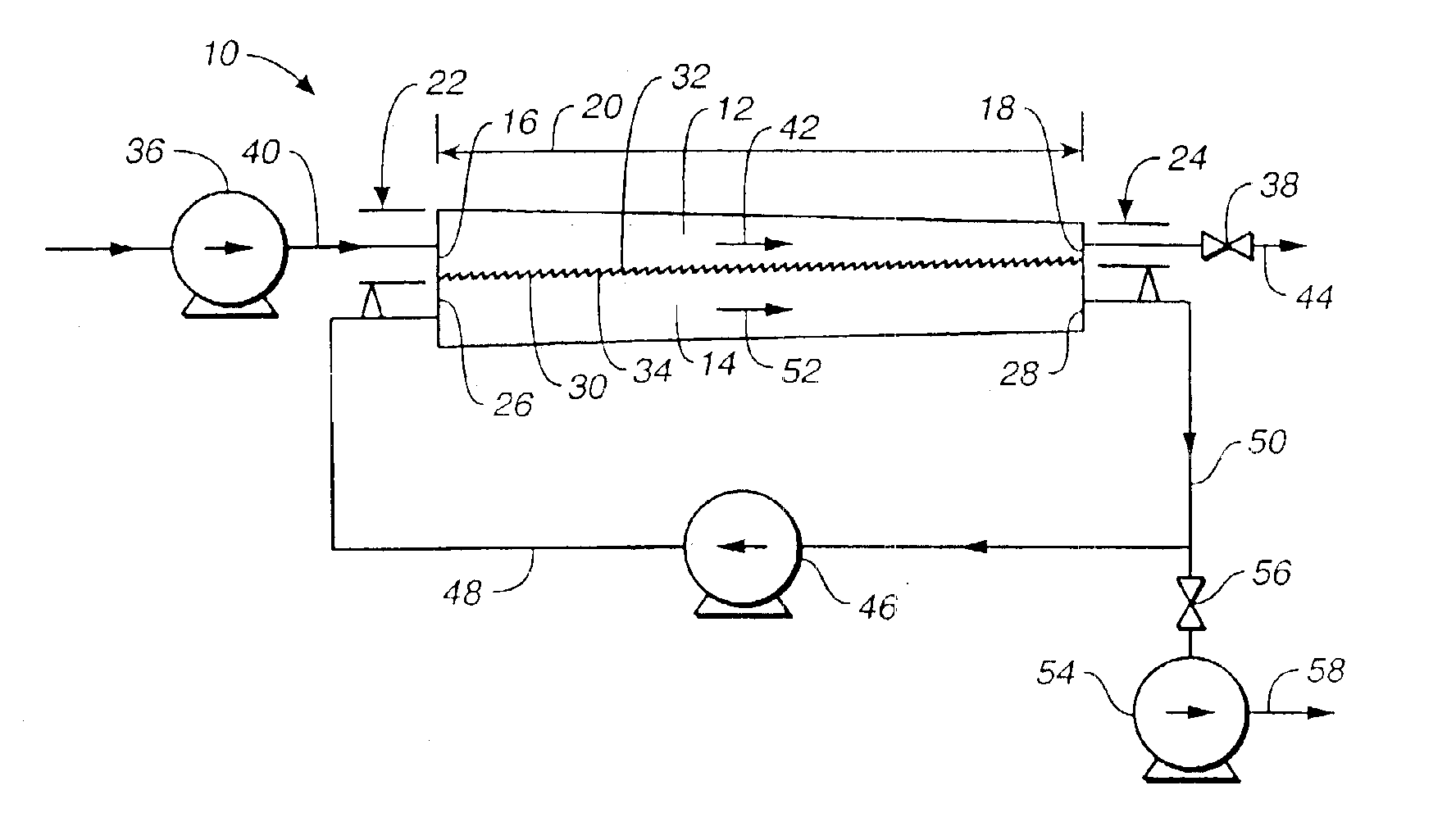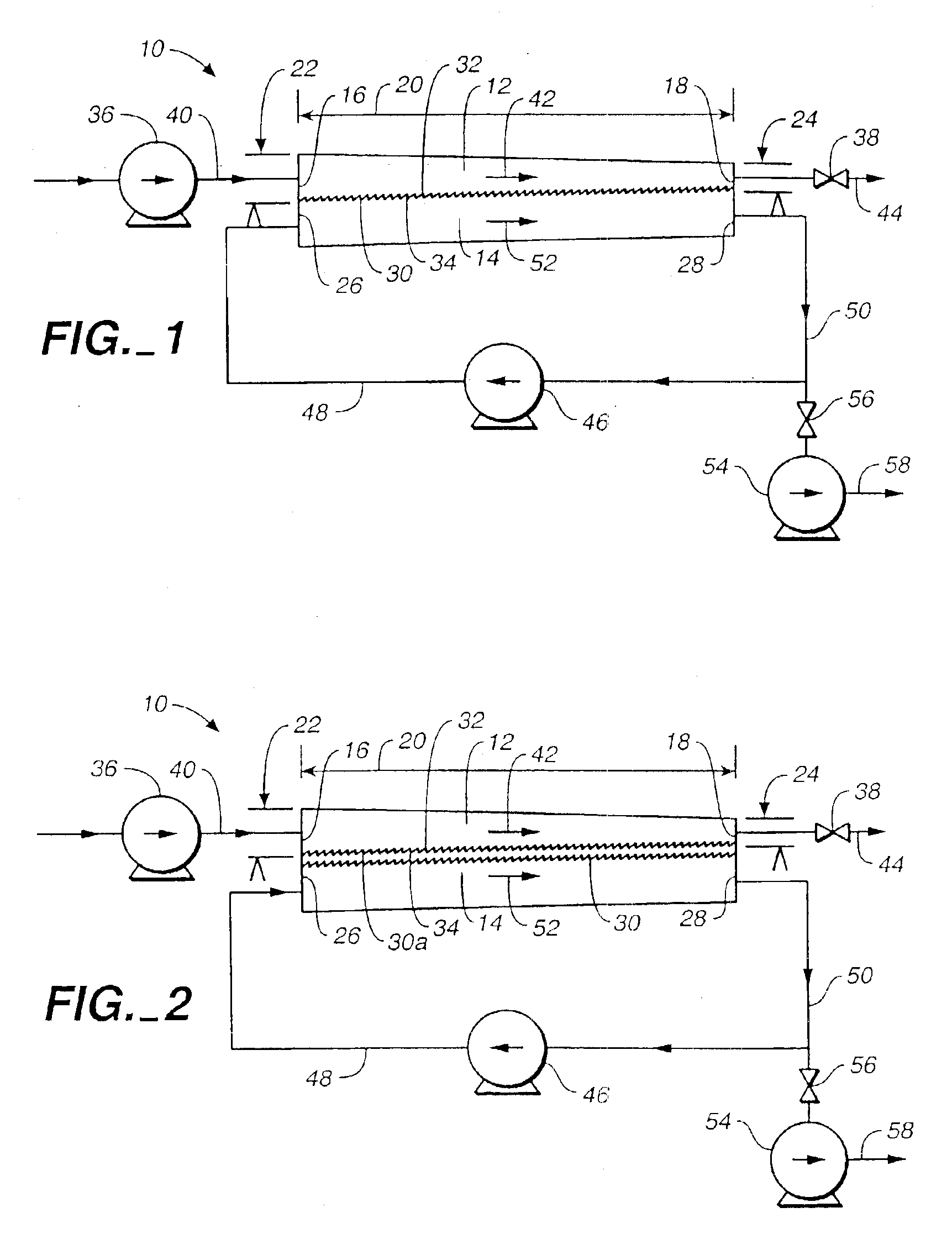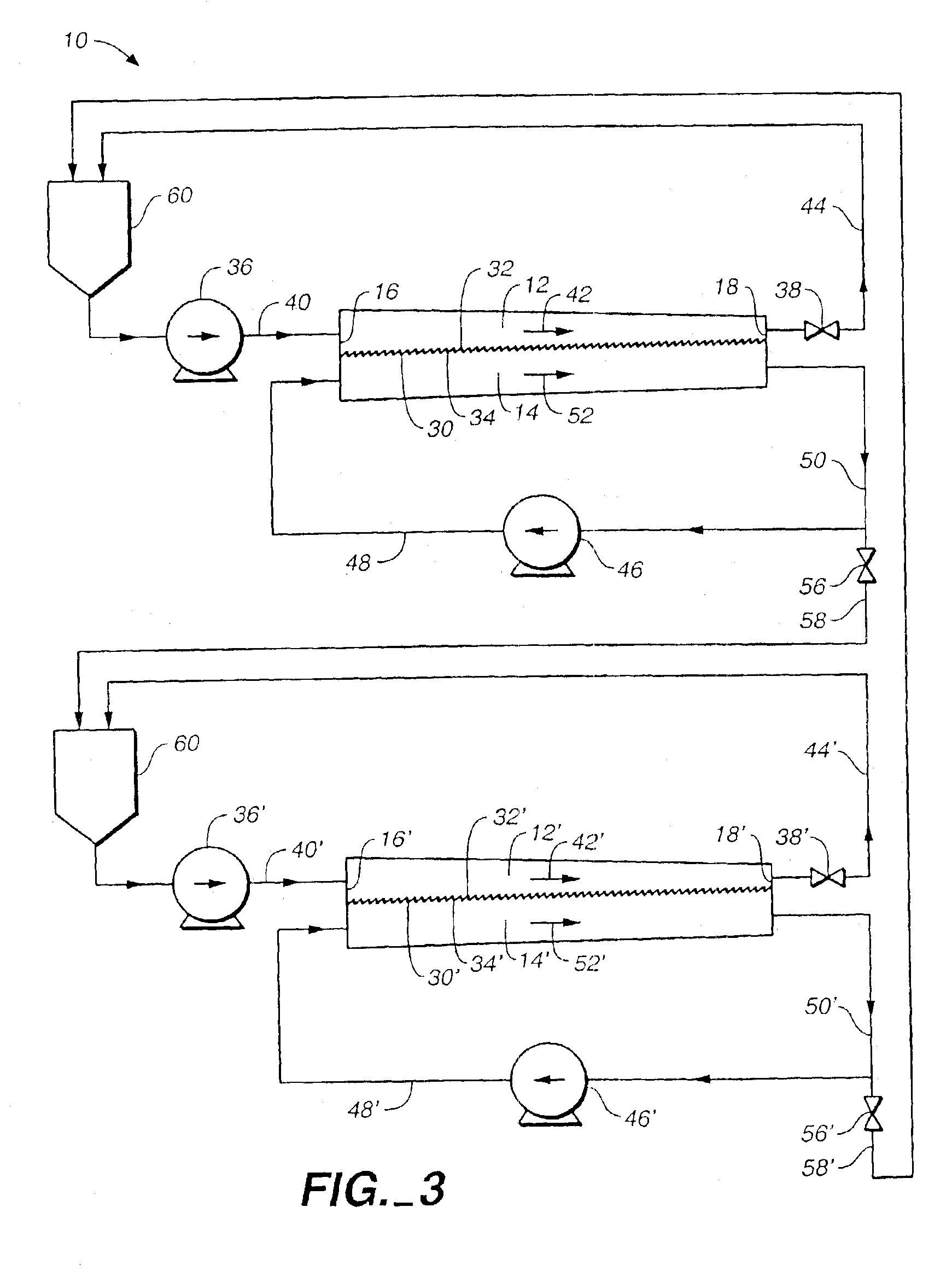Tangential-flow filtration system
a filtration system and flow channel technology, applied in the field of filters, can solve the problems of clogging, affecting and the layer of solutes on the filtration membrane, and achieve the effect of optimizing the ability of the filtration membran
- Summary
- Abstract
- Description
- Claims
- Application Information
AI Technical Summary
Benefits of technology
Problems solved by technology
Method used
Image
Examples
Embodiment Construction
[0011]The present invention includes a method and system for transferring a selected solute species from a fluid mixture to a fluid media. The system of the present invention includes a filtration membrane preferably formed as a flat, elongated, sheet having a first surface and a second surface. The filtration membrane has a preferred pore size chosen to allow the selected solute species to traverse the membrane. At the same time, the pore size prevents the passage of solutes that exceed the size of the selected species.
[0012]The system of the present invention also includes a first channel and a second channel. Both the first channel and the second channel are constructed to allow fluid to flow tangentially across a surface of the filtration membrane. More specifically, the first channel is constructed with an input port and an output port. Fluid, such as the fluid mixture, may enter the first channel at the input port. Between the input port and the output port, the fluid mixture ...
PUM
| Property | Measurement | Unit |
|---|---|---|
| molecular weight | aaaaa | aaaaa |
| pressure | aaaaa | aaaaa |
| velocity | aaaaa | aaaaa |
Abstract
Description
Claims
Application Information
 Login to View More
Login to View More - R&D
- Intellectual Property
- Life Sciences
- Materials
- Tech Scout
- Unparalleled Data Quality
- Higher Quality Content
- 60% Fewer Hallucinations
Browse by: Latest US Patents, China's latest patents, Technical Efficacy Thesaurus, Application Domain, Technology Topic, Popular Technical Reports.
© 2025 PatSnap. All rights reserved.Legal|Privacy policy|Modern Slavery Act Transparency Statement|Sitemap|About US| Contact US: help@patsnap.com



